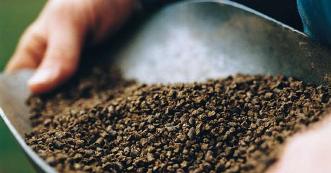Mycotoxins and their impact on swine immunity

Mycotoxins are toxic substances that disrupt the normal function of the animals’ immune system. This leads to significant negative economic impacts. The effect on the immunity and subsequent impacts in pigs are discussed here.
The economic viability of modern pig production farms is affected by numerous factors (Figure 1). Amongst them, exists some that cannot be controlled by the farmers, namely the agricultural products and the meat’s market price fluctuations and the stricter policies imposed by the agriculture regulatory organisms. Nevertheless there are many factors which can be improved as a result of the farmers’ management strategy. One of them is animal health, which has a direct link with animal feed. Feed should contain all the necessary ingredients to satisfy the animals’ nutrient requirements but also should always be free of harmless ingredients such as mycotoxins.
Immune system
Mycotoxins not only negatively impact swine performance and fertility; they also impact the immune system of the animals. The pig’s immune system is the major defence system which should be able to counteract any agents trying to disrupt the organism integrity. When an animal is exposed to a hazardous agent its immune system will make all the effort to eliminate the foreign organism and to counteract its negative effects. Animals which are fed mycotoxin-contaminated diets will have a reduced response as these toxic substances disrupt the body’s normal immune mechanism. Mycotoxins such as aflatoxins, ochratoxin A, fumonisins and trichothecenes pose negative effects at different levels of the immune response.
Several scientific research papers have found that mycotoxins negatively alter the innate and non-specific resistance of pigs, by reducing the phagocytic activity of both macrophages and neutrophils and the humoral and cell-mediated response to antigens. A practical consequence in a pig farm of the occurrence of these facts is the higher susceptibility to infectious diseases and the failure of vaccination programmes.
Economic impact
Pigs with a deficient immune system caused by mycotoxin exposure will be a preferred target of
infectious diseases caused by different agents such as viruses, bacteria (namely Chlamydia, Anaplasma and Mycoplasma) fungi and parasites. Resistance to the most economically hazardous diseases and syndromes such as PPRSV, PMWS, Mycoplasma pneumonia, Colibacillosis (E. coli) and dysentery will be therefore reduced, with serious impacts on the viability of farms as a consequence. Vaccination programme schemes are well established within the pig industry of most countries. The knowledge behind vaccination is that the animal is exposed to an antigen which toxicity has been removed but that is still able to stimulate the production of antibodies. Therefore, if the pathogen is later presented to the animal, its immune system will be prepared to counteract it efficiently.
This ideal scenario is easily destroyed by mycotoxin contamination, since it is known that they will disturb the normal macrophage activity and the antibody titers, meaning that the animal’s organism is not responding to the vaccination as it should. This results in two hazardous effects for the farm; the money invested by the farmer in the vaccination programme is to no avail leading to decreased animal performance and increased feed costs. The decrease of daily weight gain will reflect on the number of days animals remain in a set stage, with an obvious increase of feed costs. A Salmonella outbreak on a sow farm, for example, represented an extra 8.5 days in the flat decks in which 4.5 tonnes of extra feed were used (2300 pigs x 8.5 days x 0.23 kg feed/pig/day). In the next department, animals had to remain 12 extra days after this outbreak, which represented an extra 31.7 tonnes of grower feed.
Conclusion
As disease occurrence negatively impacts many factors, calculating its cost in pig farms is almost as complex as explaining the function of the immune system in simple terms. Avoiding disease on pig farms is almost impossible but prevention is possible and should be paramount in daily management protocols. It is up to the producer to effectively control the potential entry ports of a disease, such as feed, in order to minimise its occurrence. Mycotoxins usually found in feeds depress the immune function of the animals, making them an easy target for the pathogenic agents. Preventing these negative substances such as mycotoxins will undoubtedly be more cost effective than treating the diseases triggered by such agents.
Source: Feed tech Magazine Volume 12. No 9











